Ask us how we can help you succeed.
By Alan Lehane, Developer
Article

Category: Expertise strategy
In this blog, I give a simple overview of the decision trees, how they work and how they are created.
By Alan Lehane, Developer
The Machine Learning Blog Series so far has discussed Logistic Regression and Linear Regression Machine Learning Algorithms.
These Algorithms are Linear, in this article I am going to introduce an example of a non-linear Algorithm, Decision Trees.
emagine's Technical Machine Learning Series:
The Machine Learning Blog Series so far has discussed Logistic Regression and Linear Regression Machine Learning Algorithms.
These Algorithms are Linear, in this article I am going to introduce an example of a non-linear Algorithm, Decision Trees.

Above is an example of a simple decision tree. Each root represents an input variable (x) and a split at that variable.
Each Leaf represents an output variable (y) which is used to make a prediction.
The above Tree takes an example of an animal as the input variable and depending on the features of the example animal, a branch is selected, this process is repeated until a leaf is reached.
A tree can be derived from training data by using a recursive binary split. Different splits are tried and tested using a cost function. All input variables and all possible splits are evaluated in a greedy manner. (Best split is chosen).
The most common cost function is the mean square of the error. For Example, a tree is created with random splits, a supervised training set is an input into the tree, and the output (y) is returned.
The square of the error is calculated for each member of the training set:
(training set output – y)²
The average square error across the entire tree is calculated. Another random tree is created and the process repeats. After n trees have been created the best tree, i.e. the tree with the smallest average square error, is returned.
Pruning a decision tree refers to removing leaf nodes to improve the performance and readability of the tree.
The quickest and simplest way of pruning a tree is to work through each node and determine the effect on the tree of removing the node. For example, remove a node and then rerun the training set through the tree, if the error has reduced or remained the same remove the node, if the error has increased keep the node.
This blog is a continuation of the Technical Machine Learning Series, it introduced the idea of Non-Linear Machine Learning Algorithms. In this blog, I gave a simple overview of the decision trees, how they work and how they are created.
Alan Lehane, Software Developer
Alan has worked with Aspira/emagine for several years as a Software Developer, specialising in Data Analytics and Machine Learning. He has provided various services to Aspira's clients, including Software Development, Test Automation, Data Analysis and Machine Learning.
Ask us how we can help you succeed.



Linear regression is one of the most popular algorithms in both Statistics and Machine Learning. It is the simplest type of Machine Learning Algorithm. This means that it is a good place to start. In this blog, Allan Lehane is going to explain how ML Algorithms work in general using Linear Regression as an example.
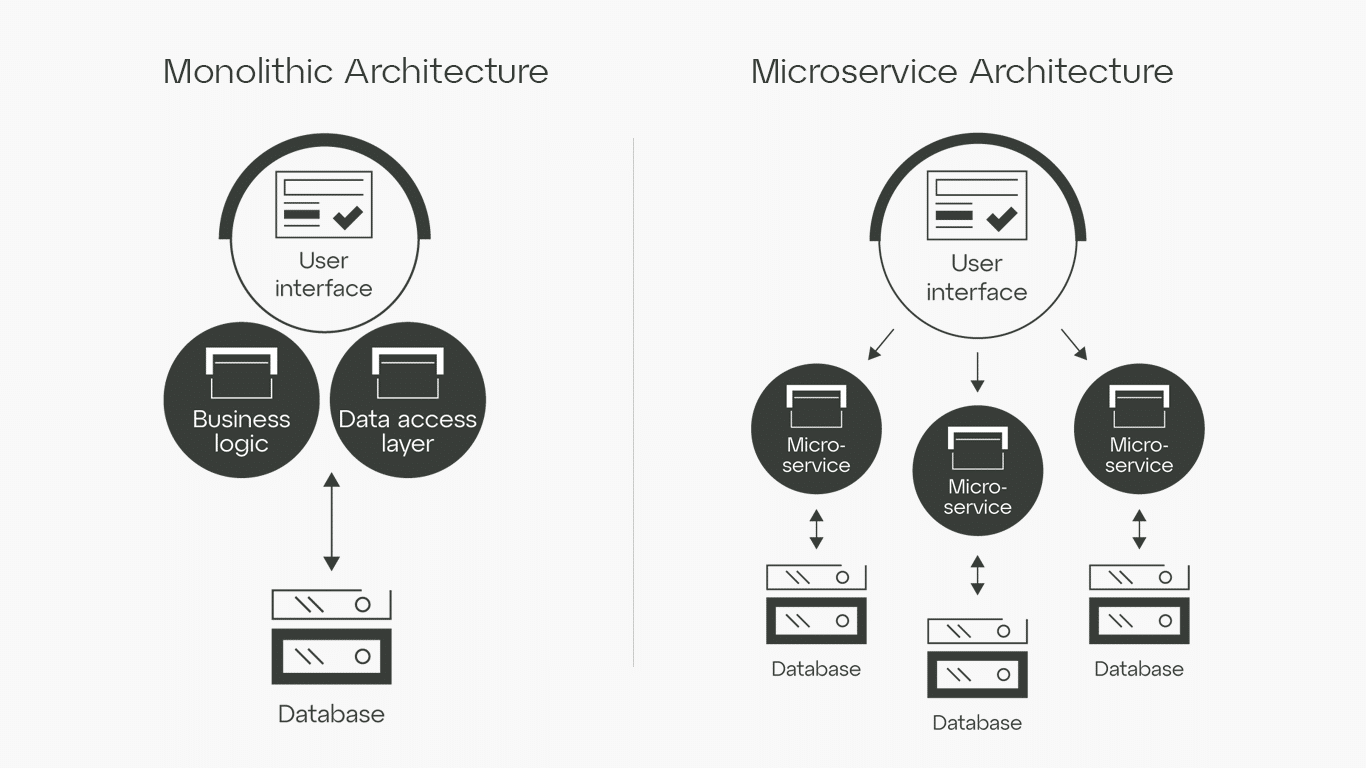
As organizations strive to deliver high-quality software and services at scale, many are turning to a microservices architecture as a way to break down monolithic applications into smaller, more manageable components.

In this article we are going to discuss how a Machine Learning algorithm works in theory and I’m also going to discuss an example of a full stack application with a Machine Learning Component, which is hosted on Microsoft Azure.

The IT landscape is shifting fast. As old outsourcing models show their cracks, forward-thinking leaders are rebuilding internal strength and redefining what smart partnerships look like. A trend is emerging where decoupling and taking back ownership takes the stage.

This article discusses how the integration of artificial intelligence (AI) and machine learning (ML) into project management is driving a cultural shift towards innovation and agility within organizations.

Discover the future of the automotive industry with insights into the rise of autonomous driving, electric vehicles, and AI innovations. Learn about new regulations, industry challenges, and groundbreaking technologies transforming transportation and car manufacturing.
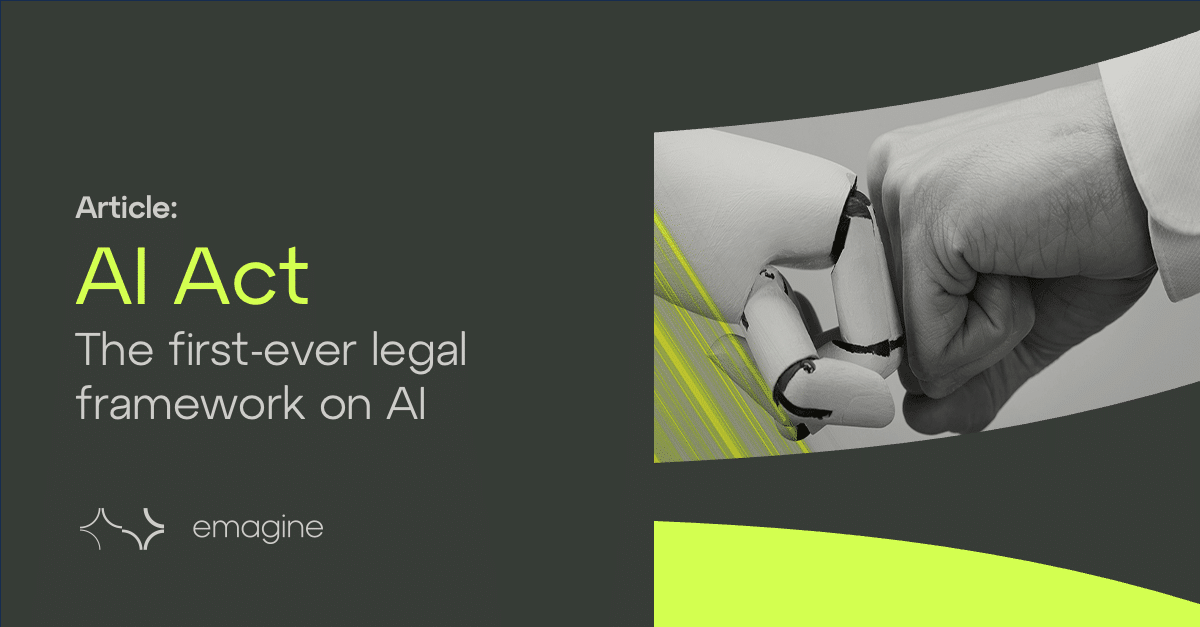
Learn the ins and outs of the world’s first comprehensive legal framework on AI, the new EU AI Act and its anticipated impact on businesses.

This article discusses practical strategies to align development requirements with actionable tasks, aiming for more efficient development cycles and better collaboration in the team.

Software developer & emagineer explores the possibilities of building an application prototype with Chat GPT in this step-by-step guide.

From simplifying HTTP requests to optimizing data mapping, front-end developer and emagineer Kamil Naja discusses the different approaches to generating front-end code.

Watch our on-demand webinar on how to increase time to market by more than 25% while improving quality, featuring Danfoss E-commerce.

From intelligent fraud detection and AI agents to quantum threats and regulatory pressure, this is your essential guide to understanding how to harness AI responsibly, securely, and at scale.
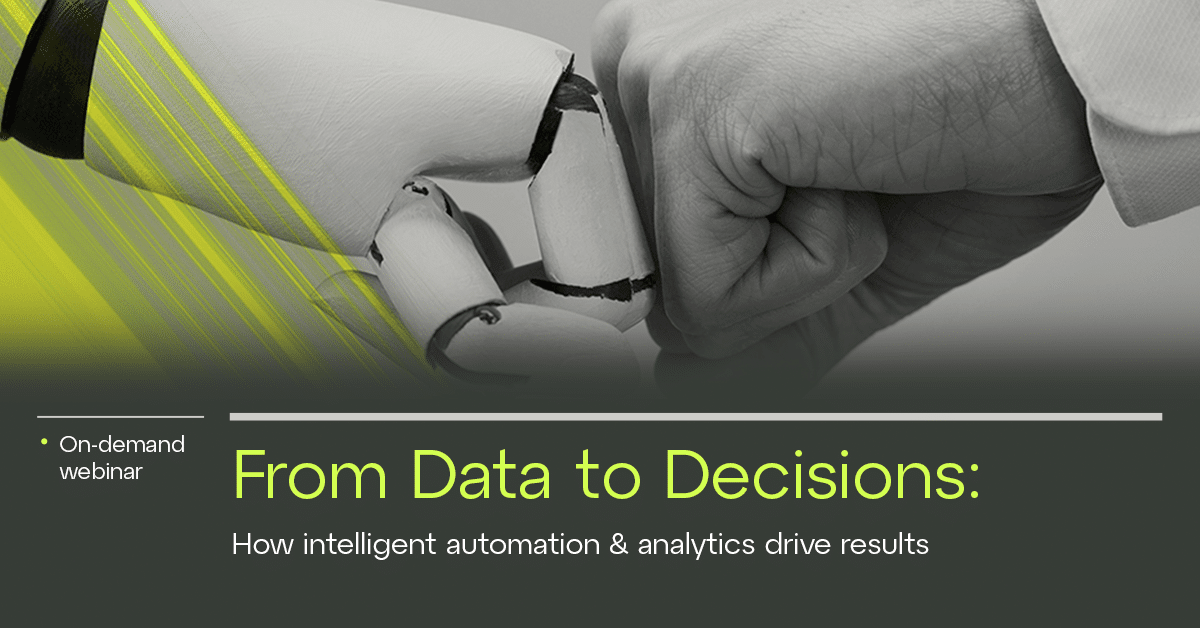
Dive deep into the dynamic duo of Intelligent Automation and Advanced Analytics. Discover how they work hand-in-hand to streamline data processing, extract profound insights, and drive impactful business actions.

Join emagineer and software architect Mateusz Pruchniak as he explores Microsoft Dev Box, virtualized solution that enables IT engineers to quickly launch self-service workstations while maintaining centralized management.

On-demand webinar for attendees:
Whether you’re steering innovation in banking, upgrading your cybersecurity posture, or preparing your enterprise for AI-powered transformation, this webinar equips you with the latest trends, threats, and best practices shaping AI in finance.
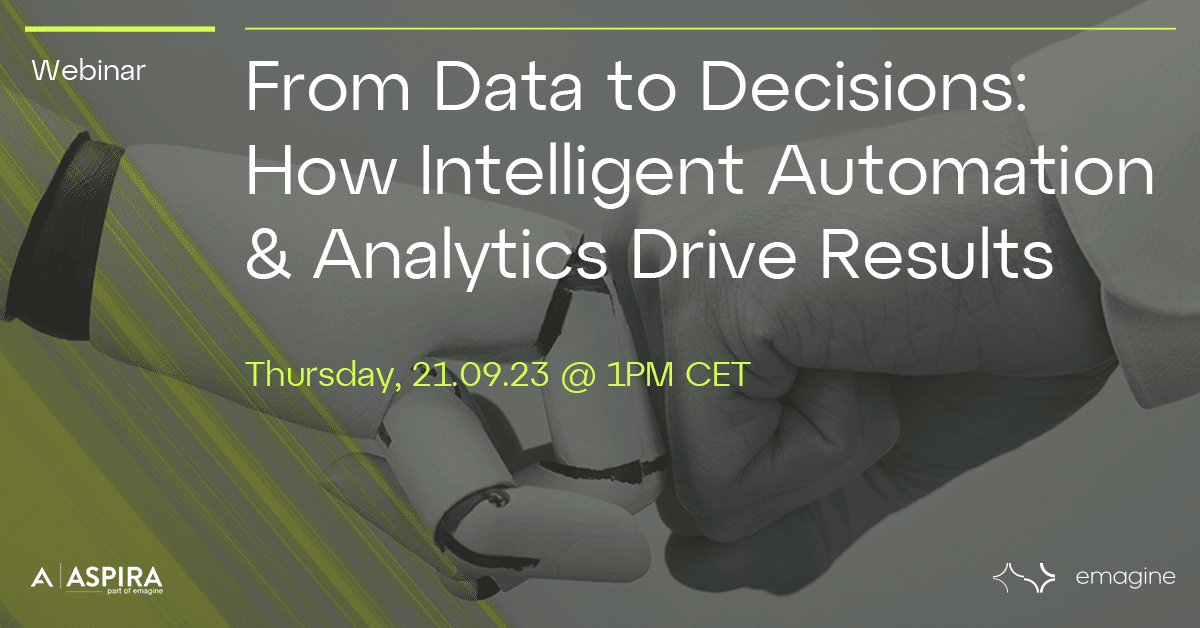
On-demand webinar for attendees:
We dive deep into the dynamic duo of Intelligent Automation and Advanced Analytics. Discover how they work hand-in-hand to streamline data processing, extract profound insights, and drive impactful business actions. The topics will include real-life case studies, expert insights, and the latest trends.

We constantly hear that AI will take control of everything and that we as humans will become less necessary or even redundant—is that really the case? In the following article, Cloud Administrator and emagineer Paweł Pancerz discusses how this revolution will unfold in the near future.

How does voice recognition function in vehicles, and what technologies and expertise drive its success? Let’s delve into the future by exploring what goes on behind the cockpit.

In the realm of front-end solutions, the vital role of back-end applications cannot be overstated. In this article, emagineer Kamil Naja delves into the world of backend development, uncovering effective methods to optimize the process.
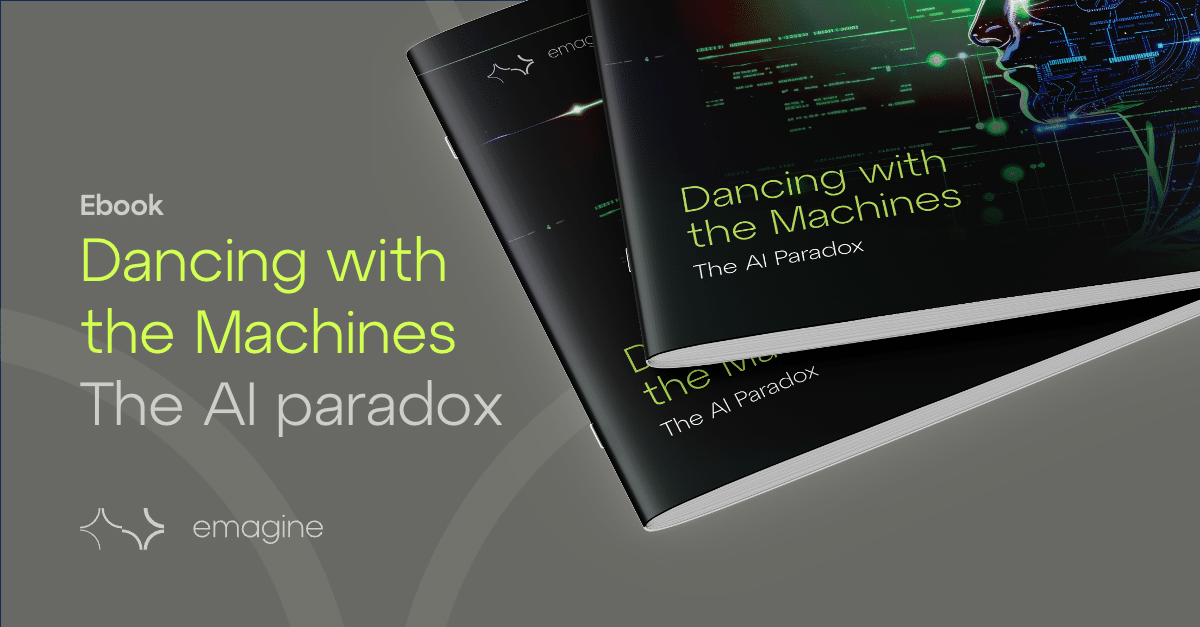
Explore how businesses can strike a balance between embracing AI’s immense potential and maintaining the human touch that fosters trust and connection.

Logistic Regression is a Linear Model for classification; a traditional linear model is used to predict a numerical value. Learn how logistic Regression works and how it differs from Linear Regression.

Join us in this webinar as we delve into the intricacies of IT transitions, spotlighting the key players: the customer, the outgoing vendor, and the incoming vendor.

Automation and RPA is on the rise as businesses vie to remain competitive. Understand the factors driving this trend as companies work to stay ahead of the curve.

Artificial intelligence (AI) is revolutionising the banking industry by transforming how banks operate, interact with their customers, and influence decisions. A key benefit often discussed is the noteworthy cost savings leveraged by AI tools, but what are the others?
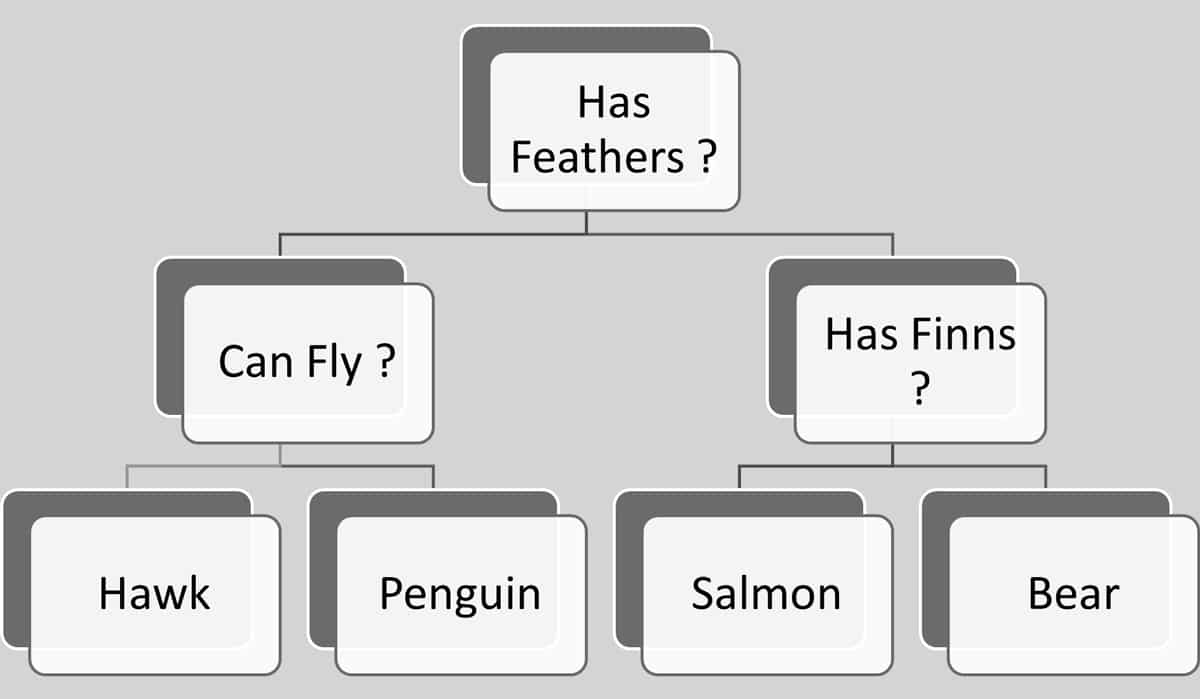
In this blog, I give a simple overview and an example of a non-linear Algorithm, Decision Trees, how they work and how they are created. Part of the Machine Learning Blog Series.

Linear regression is one of the most popular algorithms in both Statistics and Machine Learning. It is the simplest type of Machine Learning Algorithm. This means that it is a good place to start. In this blog, Allan Lehane is going to explain how ML Algorithms work in general using Linear Regression as an example.

As organizations strive to deliver high-quality software and services at scale, many are turning to a microservices architecture as a way to break down monolithic applications into smaller, more manageable components.

In this article we are going to discuss how a Machine Learning algorithm works in theory and I’m also going to discuss an example of a full stack application with a Machine Learning Component, which is hosted on Microsoft Azure.

The IT landscape is shifting fast. As old outsourcing models show their cracks, forward-thinking leaders are rebuilding internal strength and redefining what smart partnerships look like. A trend is emerging where decoupling and taking back ownership takes the stage.

This article discusses how the integration of artificial intelligence (AI) and machine learning (ML) into project management is driving a cultural shift towards innovation and agility within organizations.

Discover the future of the automotive industry with insights into the rise of autonomous driving, electric vehicles, and AI innovations. Learn about new regulations, industry challenges, and groundbreaking technologies transforming transportation and car manufacturing.

Learn the ins and outs of the world’s first comprehensive legal framework on AI, the new EU AI Act and its anticipated impact on businesses.

This article discusses practical strategies to align development requirements with actionable tasks, aiming for more efficient development cycles and better collaboration in the team.

Software developer & emagineer explores the possibilities of building an application prototype with Chat GPT in this step-by-step guide.

From simplifying HTTP requests to optimizing data mapping, front-end developer and emagineer Kamil Naja discusses the different approaches to generating front-end code.

Watch our on-demand webinar on how to increase time to market by more than 25% while improving quality, featuring Danfoss E-commerce.

From intelligent fraud detection and AI agents to quantum threats and regulatory pressure, this is your essential guide to understanding how to harness AI responsibly, securely, and at scale.

Dive deep into the dynamic duo of Intelligent Automation and Advanced Analytics. Discover how they work hand-in-hand to streamline data processing, extract profound insights, and drive impactful business actions.

Join emagineer and software architect Mateusz Pruchniak as he explores Microsoft Dev Box, virtualized solution that enables IT engineers to quickly launch self-service workstations while maintaining centralized management.

On-demand webinar for attendees:
Whether you’re steering innovation in banking, upgrading your cybersecurity posture, or preparing your enterprise for AI-powered transformation, this webinar equips you with the latest trends, threats, and best practices shaping AI in finance.

On-demand webinar for attendees:
We dive deep into the dynamic duo of Intelligent Automation and Advanced Analytics. Discover how they work hand-in-hand to streamline data processing, extract profound insights, and drive impactful business actions. The topics will include real-life case studies, expert insights, and the latest trends.

We constantly hear that AI will take control of everything and that we as humans will become less necessary or even redundant—is that really the case? In the following article, Cloud Administrator and emagineer Paweł Pancerz discusses how this revolution will unfold in the near future.

How does voice recognition function in vehicles, and what technologies and expertise drive its success? Let’s delve into the future by exploring what goes on behind the cockpit.

In the realm of front-end solutions, the vital role of back-end applications cannot be overstated. In this article, emagineer Kamil Naja delves into the world of backend development, uncovering effective methods to optimize the process.

Explore how businesses can strike a balance between embracing AI’s immense potential and maintaining the human touch that fosters trust and connection.

Logistic Regression is a Linear Model for classification; a traditional linear model is used to predict a numerical value. Learn how logistic Regression works and how it differs from Linear Regression.

Join us in this webinar as we delve into the intricacies of IT transitions, spotlighting the key players: the customer, the outgoing vendor, and the incoming vendor.

Automation and RPA is on the rise as businesses vie to remain competitive. Understand the factors driving this trend as companies work to stay ahead of the curve.

Artificial intelligence (AI) is revolutionising the banking industry by transforming how banks operate, interact with their customers, and influence decisions. A key benefit often discussed is the noteworthy cost savings leveraged by AI tools, but what are the others?

In this blog, I give a simple overview and an example of a non-linear Algorithm, Decision Trees, how they work and how they are created. Part of the Machine Learning Blog Series.

Linear regression is one of the most popular algorithms in both Statistics and Machine Learning. It is the simplest type of Machine Learning Algorithm. This means that it is a good place to start. In this blog, Allan Lehane is going to explain how ML Algorithms work in general using Linear Regression as an example.

As organizations strive to deliver high-quality software and services at scale, many are turning to a microservices architecture as a way to break down monolithic applications into smaller, more manageable components.

In this article we are going to discuss how a Machine Learning algorithm works in theory and I’m also going to discuss an example of a full stack application with a Machine Learning Component, which is hosted on Microsoft Azure.


